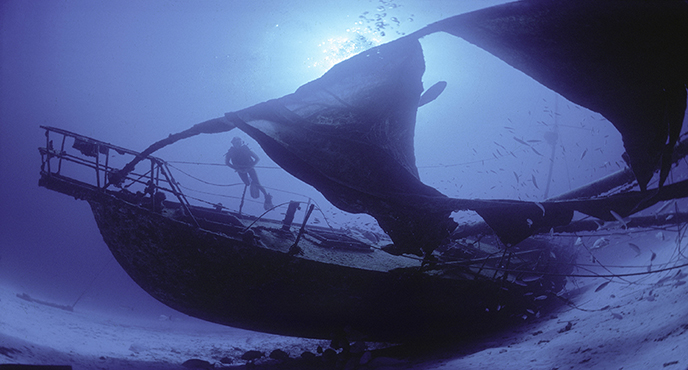
El domingo, 21 de agosto, dio comienzo una de las expediciones más esperadas del año. Arqueólogos de ocho países mediterráneos, liderados por la UNESCO, exploran el Canal de Skerki en busca de los restos de cuatro naufragios datados desde la Antigüedad hasta el siglo XX.
El Canal de Skerki se encuentra situado al noroeste del estrecho de Sicilia. Multitud de naufragios han tenido lugar en esta ubicación debido a las características topográficas, entre las que se encuentran corrientes opuestas y gran cantidad de rocas bajo la superficie. Los llamados Bancos de Skerki están compuestos por arrecifes de gran peligrosidad para la navegación y a su vez, constituía una antigua ruta comercial de alta mar que comunicaba Ostia -puerto de abastecimiento de Roma- con Cártago (actual Túnez).
El equipo de investigadores arqueólogos tiene como objetivo documentar y catalogar los restos de este “gran cementerio de barcos”. Para ello, cuentan con vehículos submarinos teledirigidos (ROV-Remotely Operated Underwater Vehicles). El cuerpo de esta misión está formado por investigadores de Argelia, Croacia, Egipto, España, Francia, Italia y Túnez. Además, se encuentran acompañados de fotógrafos profesionales como el español Ángel Fitor.
La expedición partió el 21 de agosto desde La Seyne-sur-Mer (Francia) y se espera que atraque en Túnez este próximo 3 de septiembre.
El proyecto Skerki se encuentra, por otro lado, enmarcado en la Convención sobre la Protección del Patrimonio Cultural Subacuático de la UNESCO. Este acuerdo, en su 20 aniversario, sigue transmitiendo un ejemplo de cooperación internacional en la salvaguarda del patrimonio subacuático y en la lucha contra los saqueos y la destrucción de la riqueza patrimonial por la pesca de arrastre.
Nuevamente, la UNESCO demuestra la importancia de la conservación del patrimonio cultural subacuático, presente de manera indirecta en los Objetivos de Desarrollo Sostenible de la Agenda 2030, junto con la lucha para mitigar el riesgo de la pesca masiva y la conservación de la vida submarina. Este proyecto busca difundir el conocimiento de las huellas de nuestra historia que descansan en las profundidades.
__
SKERKI PROJECT: DISCOVERING UNDERWATER ARCHAEOLOGICAL CULTURAL HERITAGE
On Sunday, August 21st, one of the most eagerly awaited expeditions of the year began. Archaeologists from eight Mediterranean countries, led by UNESCO, are exploring the Skerki Channel in search of the remains of four shipwrecks dating from Antiquity to the 20th century.
The Skerki Channel is located northwest of the Strait of Sicily. Many shipwrecks have occurred in this location due to the topographical features, which include opposing currents and a large amount of rocks under the surface. The so-called Skerki Banks are composed of reefs of great danger for navigation and, in turn, constituted an ancient high sea trade route that connected Ostia -Rome's supply port- with Carthage (present-day Tunisia).
The team of archaeological researchers aims to document and catalog the remains of this "great ship graveyard". To do so, they are using Remotely Operated Underwater Vehicles (ROVs). The mission consists of researchers from Algeria, Croatia, Egypt, Spain, France, Italy and Tunisia. In addition, they are accompanied by professional photographers such as the Spanish Ángel Fitor.
The expedition left La Seyne-sur-Mer (France) on August 21st and is expected to dock in Tunisia on September 3rd.
The Skerki project is also part of UNESCO's Convention on the Protection of the Underwater Cultural Heritage. This agreement, on its 20th anniversary, continues to set an example of international cooperation in the safeguarding of underwater heritage and in the fight against looting and the destruction of heritage wealth by trawling.
Once again, UNESCO demonstrates the importance of the conservation of underwater cultural heritage, indirectly present in the Sustainable Development Goals of the 2030 Agenda, along with the fight to mitigate the risk of mass fishing and the conservation of underwater life. This project seeks to disseminate knowledge of the traces of our history that lie in the depths.
__
